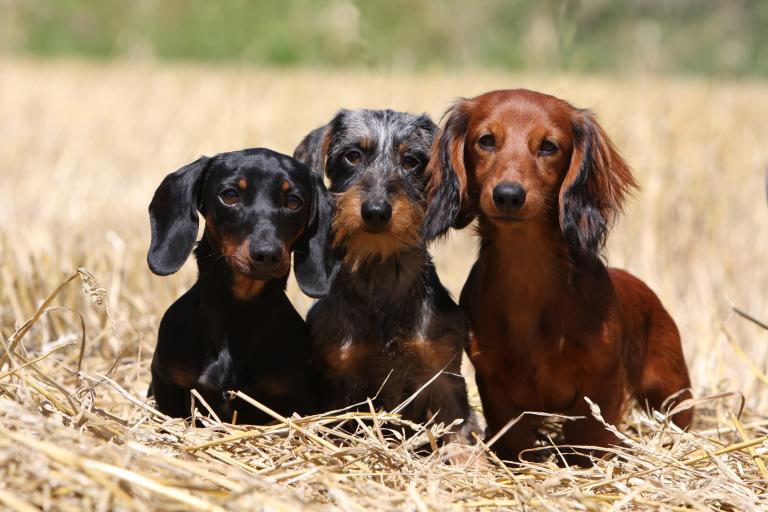Osteogenesis Imperfecta (OI Dachshund)
With osteogenesis imperfecta (brittle bone disease - OI) a reduction and malformation in the synthesis of collagen occurs, which is a major component of bone. As a result, affected animals have brittle bones and teeth and unusually elastic joints.
The disease occurs in dachshunds and is caused by a mutation in the SERPINH1 gene. The inheritance is autosomal recessive.
Genetic Test: available in Shop
Symptoms
- Brittle bones and teeth
- Frequent bone fractures
- Unusually elastic joints
- Restrictions in movement
General Information
- With osteogenesis imperfecta (brittle bone disease - OI) a reduction and malformation in the synthesis of collagen occurs, which is a major component of bone.
- Most often, the symptoms lead to an extremely decreased quality of life and affected animals have to be euthanized.
- The causative mutation was found in 10% of Dachshunds in Europe and even in 20% of Dachshunds in Germany (Eckardt et al., 2013).
Test Information
This mutation test detects a change in a single base pair (c.977T>C) in the SERPINH1 gene.
Test in Shop
Also in the:
Genotype and Lab Report
Inheritance: autosomal recessive
→ The disease only occurs when both alleles of the gene are affected by the mutation (oi/oi). Dogs that have only one allele with the causative mutation (N/oi) are clinically healthy carriers.
Genotypes:
N/N = genetically normal
The dog has no variants for OI and thus cannot pass it on to offspring.
N/oi = a carrier
The dog is a clinically healthy carrier. The variation is passed on 50% to the offspring, which are also carriers.
oi/oi = affected
The variation would be passed on to 100% to the offspring if the dog reaches breeding maturity.
Recommendations
- Carrier animals can be bred to normal animals (N/oi x N/N). Before using the offspring in breeding, it should be tested whether they are normal or carriers.
- Mating two carrier animals (N/oi x N/oi) should be avoided because there is a 25% chance that the offspring will be affected.
- Affected animals (oi/oi) should be excluded from breeding.
Literature
Drogemuller, C., Becker, D., Brunner, A., Haase, B., Kircher, P., Seeliger, F., Fehr, M., Baumann, U., Lindblad-Toh, K., Leeb, T.: A missense mutation in the SERPINH1 gene in Dachshunds with osteogenesis imperfecta. PLoS Genet 5:e1000579, 2009. Pubmed reference: 19629171. DOI: 10.1371/journal.pgen.1000579
Eckardt, J., Kluth, S., Dierks, C., Philipp, U., Distl, O.: Population screening for the mutation associated with osteogenesis imperfecta in dachshunds. Vet Rec 172:364, 2013. Pubmed reference: 23315765. DOI: 10.1136/vr.101122
Schütz, E., Brenig, B., Scharfenstein, M., Drögemüller, C., Leeb, T.: Osteogenesis imperfecta in dachshunds. Vet Rec 172:319, 2013. Pubmed reference: 23525816. DOI: 10.1136/vr.f1823
Further information is available at: Online Mendelian Inheritance in Animals.

